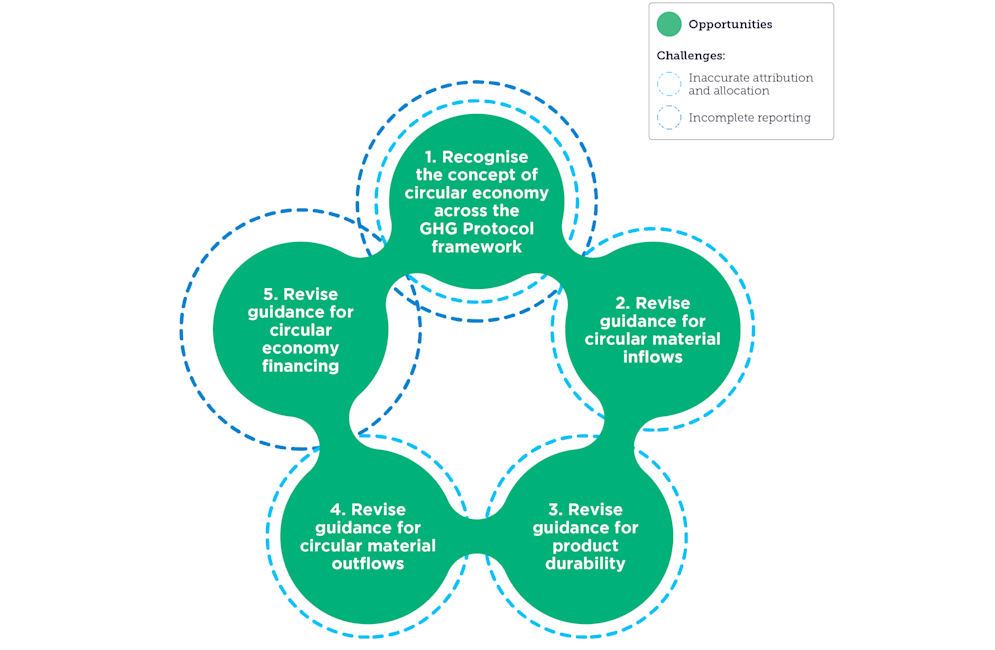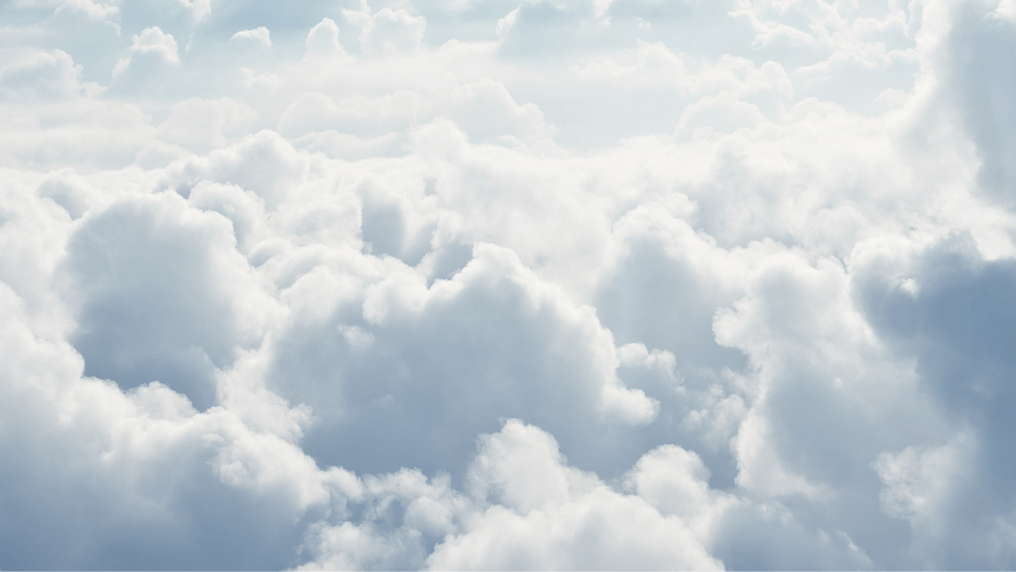As the Greenhouse Gas Protocol plans for revisions to its emissions accounting framework, the Ellen MacArthur Foundation has published an insights paper on how it could better support the circular economy transition.
To meet the goals of the Paris Agreement on climate change, we need to rethink the way we make, use, and dispose of products and materials. The move to renewable energyrenewable energyEnergy derived from resources that are not depleted on timescales relevant to the economy, i.e. not geological timescales. and energy efficiency can address approximately half of global greenhouse gas (GHG) emissions. In order to tackle the remaining emissions, we need to accelerate the transition to a circular economycircular economyA systems solution framework that tackles global challenges like climate change, biodiversity loss, waste, and pollution. It is based on three principles, driven by design: eliminate waste and pollution, circulate products and materials (at their highest value), and regenerate nature..
However, the way GHG emissions are currently reported can disincentivise the shift to circular business models and the adoption of circular practices. Businesses and capital markets are not getting the accurate data needed for decision-making on the impact of their circular activities on climate-related risks and opportunities.
Addressing this is critical to unlocking the case for circular business models, as well as leveraging their potential to address global challenges, including the biodiversity and pollution crises. It is important to remember that not all emissions reductions are equal. It is possible to reduce CO2e emissions while wasting finite materialsfinite materialsMaterials that are non-renewable on timescales relevant to the economy, i.e. not geological timescales., degrading nature, and polluting land and water, but it is also possible to reduce emissions through activities that keep materials in circulation and regenerate nature.
The Greenhouse Gas Protocol, the world’s most widely used emissions accounting framework, is undergoing revisions. The Ellen MacArthur Foundation is taking this opportunity to ensure that emissions accounting for circular activities is ‘true and fair’ — in line with the GHG Protocol’s own objectives. Working with our Network, we have captured the challenges faced by businesses leading the circular economy transition in a range of sectors, and shared our insights with the GHG Protocol on opportunities to revise its accounting guidance, specifically for Scope 3 emissions (those occurring in a company’s value chain). We have published these insights in the paper Improving climate emissions accounting to accelerate the circular economy transition.
The following examples of how current accounting methodologies lead to inaccurate or incomplete emissions calculations, or unfairly favour linear over circular activities, are described in the paper.
Switching from linear to circular models of revenue generation: the emissions attributable to the multiple use phases and more complex value chains associated with circular solutions, such as reusereuseThe repeated use of a product or component for its intended purpose without significant modification., repairrepairOperation by which a faulty or broken product or component is returned back to a usable state to fulfil its intended use., and remanufacturing, are not reflected accurately in inventories
Re-use: attributing production emissions only to the first user means that accounting is not incentivising reuse over disposal
Improving durability and enabling upgradability: the requirement for advance reporting of anticipated use-phase emissions in year of sale means that:
Companies making their products more durable are penalised because in the year of sale they have to report greater Scope 3 use-phase emissions for the elongated lifetime
The emissions impact of future upgrades cannot be captured once they are introduced
Selecting end-of-use management: companies are able to exclude emissions from energy-generating incineration and from recycling, reuse, and repair so there is no way to capture the difference in emissions of each option
Assessing investment portfolios: investors are not required to report the Scope 3 emissions of their portfolio companies, although Scope 3 is where their biggest climate impact lies. Their investment decisions will miss the potential emissions impact of shifts from linear to circular activity and business models within portfolio value chains
To address these challenges, the insights paper identifies five opportunities for revisions to the GHG Protocol, with particular focus on the Scope 3 standard and guidance:

A note on the GHG Protocol revisions
The GHG Protocol anticipates releasing draft standards/guidance for public consultation in 2026 and publishing final standards/guidance in 2027. The review is an opportunity for the standards and guidance to better support companies to account for their emissions as they shift from linear to circular approaches to value creation. Given the wide reach of the GHG Protocol, these revisions have the potential to contribute significantly to normalising circular economy solutions.
We encourage all users of emissions data to support the GHG Protocol with its revisions to ensure that accounting provides a true and fair account of the impact of circular activities, in line with our insights and recommendations.
Download
Improving climate emissions accounting to accelerate the circular economy transition is available in English, Spanish, Portuguese, and Chinese.
This paper is intended for businesses, investors, policymakers, industry associations, and sustainability professionals concerned with accurate GHG emissions accounting. It proposes revisions to the GHG Protocol’s methodology so it better reflects business activity aligned with the transition to a circular economy.
To quote this paper, please use the following reference: Ellen MacArthur Foundation, Improving climate emissions accounting to accelerate the circular economy transition (2025).







